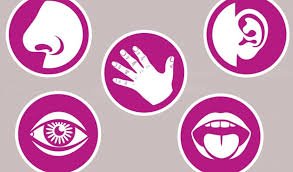Have you ever wondered how you can feel a gentle breeze for your pores and skin or the soft touch of a feather? Well, scientists have these days determined that we’ve got a secret touch sensor hidden right beneath our noses – or as an alternative, in our hair follicles. For years, scientists believed that our sense of contact became completely depending on nerve endings in our pores and skin. These nerve endings, like tiny antennae, are continuously scanning our skin for any pressure or vibration. They then send signals to our brains, which interpret the ones indicators as contact. However, a new look at posted within the magazine Science Advances has found out that our hair follicles play a miles more energetic position in our feel of contact than we previously concept. The observe, led by researchers at Imperial College London, found that cells within the outer root sheath (ORS) of hair follicles have a better percent of touch-touchy receptors than equivalent cells in the skin. These ORS cells are not just passive sensors; they may be also active communicators. When they’re stimulated, they launch neurotransmitters, which might be chemical substances that transmit signals among cells. In this example, the ORS cells launch the neurotransmitters serotonin and histamine. These neurotransmitters then sign to nearby sensory nerves, which send the feeling of contact to the mind. This means that our hair follicles are not simply bystanders in our experience of touch; they may be energetic participants. The discovery of this new touch sensor may want to have important implications for our expertise of skin sicknesses, such as eczema. Eczema is a chronic skin situation that causes itching, dryness, and infection. It is concept to be caused by a aggregate of genetic and environmental elements. The reality that ORS cells launch histamine is mainly interesting as histamine is thought to play a position in inflammation. This indicates that ORS cells may be worried within the improvement of eczema. Further studies is wanted to decide the precise position that ORS cells play in eczema and different pores and skin illnesses. However, this discovery is a vast leap forward in our information of how our pores and skin senses touch. In addition to its capacity clinical programs, the invention of this new contact sensor additionally increases some interesting questions about our perception of the arena round us. For instance, how does the records from our hair follicles combine with the information from our skin to create a whole experience of contact? These are questions that scientists are most effective beginning to explore. But one aspect is for positive: our hair follicles are gambling a far greater critical position in our lives than we ever imagined.






